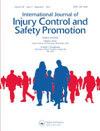全球摩托车手头盔使用率:对 5,006,476 名参与者的系统回顾和荟萃分析。
IF 2.3
4区 医学
Q2 PUBLIC, ENVIRONMENTAL & OCCUPATIONAL HEALTH
International Journal of Injury Control and Safety Promotion
Pub Date : 2024-04-16
DOI:10.1080/17457300.2024.2335509
引用次数: 0
摘要
道路交通伤害对公众健康造成了巨大的负担,尤其是在发展中国家。这项系统综述和荟萃分析综合了全球摩托车头盔使用率方面的证据,共收录了 249 篇文章中的 299 条记录,涉及 1982 年至 2022 年间的 5,006,476 名参与者。研究结果表明,在过去 40 年中,头盔使用率呈下降趋势,总体使用率为 48.71%。元回归分析没有发现总体流行率有任何统计学上的显著变化。分组分析显示,观察/调查记录中的头盔使用率(54.29%)高于碰撞病人记录(44.84%)。在观察/调查记录(62.61% 对 28.23%)和撞车患者记录(47.76% 对 26.61%)中,骑手/摩托车者佩戴头盔的可能性均高于乘客。与没有强制性头盔使用法的国家相比,有强制性头盔使用法的国家头盔使用率更高(52.26% 对 37.21%)。非洲大陆的头盔使用率最低,而拉丁美洲和加勒比地区的头盔使用率较高。这项研究全面概述了全球头盔使用率,强调了高收入国家和低收入国家之间的差距、执法方面的差异以及四十年来的趋势。有必要采取有针对性的干预措施来改善佩戴头盔的习惯,尤其是在乘客和使用率较低的地区。有效的立法和宣传活动对于促进头盔的使用和减少道路交通伤害负担至关重要。本文章由计算机程序翻译,如有差异,请以英文原文为准。
The prevalence of helmet use in motorcyclists around the world: a systematic review and meta-analysis of 5,006,476 participants.
Road traffic injuries present a significant public health burden, especially in developing countries. This systematic review and meta-analysis synthesized global evidence on motorcycle helmet use prevalence by including 299 records across 249 articles involving 5,006,476 participants from 1982 to 2022. The findings revealed a declining trend in helmet use prevalence over the past four decades, with an overall prevalence of 48.71%. The meta-regression analysis did not find any statistically significant change in the overall prevalence. Subgroup analysis showed higher helmet use prevalence in observation/survey records (54.29%) compared to crashed patient records (44.84%). Riders/Motorcyclists demonstrated a higher likelihood of wearing helmets than passengers in both observation/survey records (62.61 vs. 28.23%) and crashed patient records (47.76 vs. 26.61%). Countries with mandatory helmet use laws had higher helmet usage prevalence compared to those without (52.26 vs. 37.21%). The African continent had the lowest helmet use rates, while Latin America and the Caribbean regions had higher rates. This study provides a comprehensive overview of global helmet use prevalence, emphasizing disparities between high and low-income countries, variations in law enforcement, and trends over four decades. Targeted interventions are necessary to improve helmet-wearing habits, especially among passengers and regions with low usage rates. Effective legislation and awareness campaigns are crucial for promoting helmet use and reducing road traffic injuries burden.
求助全文
通过发布文献求助,成功后即可免费获取论文全文。
去求助
来源期刊

International Journal of Injury Control and Safety Promotion
PUBLIC, ENVIRONMENTAL & OCCUPATIONAL HEALTH-
CiteScore
4.40
自引率
13.00%
发文量
48
期刊介绍:
International Journal of Injury Control and Safety Promotion (formerly Injury Control and Safety Promotion) publishes articles concerning all phases of injury control, including prevention, acute care and rehabilitation. Specifically, this journal will publish articles that for each type of injury: •describe the problem •analyse the causes and risk factors •discuss the design and evaluation of solutions •describe the implementation of effective programs and policies The journal encompasses all causes of fatal and non-fatal injury, including injuries related to: •transport •school and work •home and leisure activities •sport •violence and assault
 求助内容:
求助内容: 应助结果提醒方式:
应助结果提醒方式:


